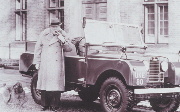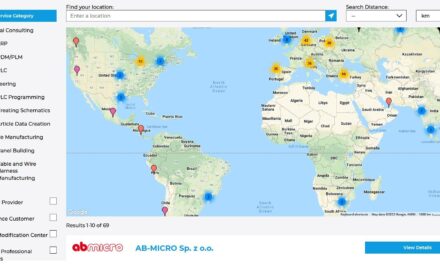 Jaguar Land Rover’s heritage comprises such vehicles as the iconic Jaguar Mark 2, the E-Type, and the Land Rover Defender. Press acclaim, meanwhile, has greeted Range Rover’s recent launch of the Evoque, and the Jaguar C-X16 or C-X75 show the shape of things to come.
Jaguar Land Rover’s heritage comprises such vehicles as the iconic Jaguar Mark 2, the E-Type, and the Land Rover Defender. Press acclaim, meanwhile, has greeted Range Rover’s recent launch of the Evoque, and the Jaguar C-X16 or C-X75 show the shape of things to come.
Having passed through several companies, Jaguar Land Rover (JLR) has emerged within Tata Motors, however it has inherited a variety of auto industry software in the process.
Paul Davies, JLR’s director of product development operations, leads the teams that define the vehicle development processes, tooling technology, and project and Product Lifecycle Management (PLM) technologies for 8000 JLR people worldwide. He commented: “Our IT history has generated more than 600 islands and silos of JLR legacy data. The majority is not inter-compatible. To flourish in business, all our data must be interoperably integrated and intuitively available to every JLR stakeholder.”
So, to enhance innovation and reduce development time, JLR has partnered with Dassault Systèmes (DS) to deploy Version 6 PLM in a business transformation programme called iPLM.
Version 6 features ENOVIA as its backbone and CATIA, DELMIA, SIMULIA, and 3DVIA. JLR iPLM covers the entire vehicle definition and features across 14 domains, including bills of material, parts and assembly, requirements and verification, plus in-vehicle embedded software, which accounts for 60% of new car development. Electrical design, styling and computer-aided engineering, including multi-physics and FEA, are also included.
 “Version 6 enfranchises data users and managers with 3D visualisations of all product data and manufacturing operations. Assembly and disassembly routines with legislative parts and vehicle governance data are more readily available in manageable formats. The immediate benefit of creating, seeing, experiencing and sharing data in a Version 6 environment is translating into time savings of up to 40% for some specific roles in product development,” said Davies.
“Version 6 enfranchises data users and managers with 3D visualisations of all product data and manufacturing operations. Assembly and disassembly routines with legislative parts and vehicle governance data are more readily available in manageable formats. The immediate benefit of creating, seeing, experiencing and sharing data in a Version 6 environment is translating into time savings of up to 40% for some specific roles in product development,” said Davies.
Benefits have also included improvements in vehicle volumes and quality, with iPLM delivering extra time for innovation so that JLR can build more and better vehicles, for example. Furthermore, Version 6 provides a seamless operating world, with extensive Tier One supplier involvement. As a result, JLR can add vehicle programs and accelerate global product development.
At JLR, Version 6 is deployed from vehicle design concept, through engineering and manufacturing, to marketing and sales. John Knight Gregson, iPLM program lead at JLR, said: “It is a robust, seamless and integrated solution that delivers data consistency across suppliers, financial control and supply chains. An ERP interface provides further systems and process synchronisation and management.
“Data that is entered once is shared and reused many times. Concurrent engineering between teams across the world generates collaboration with a guarantee of accuracy that cuts waste while improving productivity.”
Version 6 also provides enterprise-wide availability of CATIA 3D product simulation assets, and teams ranging from engineers and manufacturers, to sourcing and finance, can collaborate earlier. It also reduces errors, losses and waste by providing accurate and timely information.
As design progresses, DELMIA Version 6 simulates and validates JLR production environments virtually, while ENOVIA Version 6 provides a single source for regulatory and materials compliance data that is available to all stakeholders, helping the company increase scale and volume of products with confidence of compliancy.
Knight Gregson added: “iPLM makes better use of resources, including time. It also introduces multiple efficiencies. For example, errors are detected and corrected earlier to produce significant savings. Virtual build improves physical build quality and productivity through enhanced training and cognition for production engineers. It also values fitted parts in real time, providing an accurate business cost of each vehicle made.”
Dassault Systèmes

